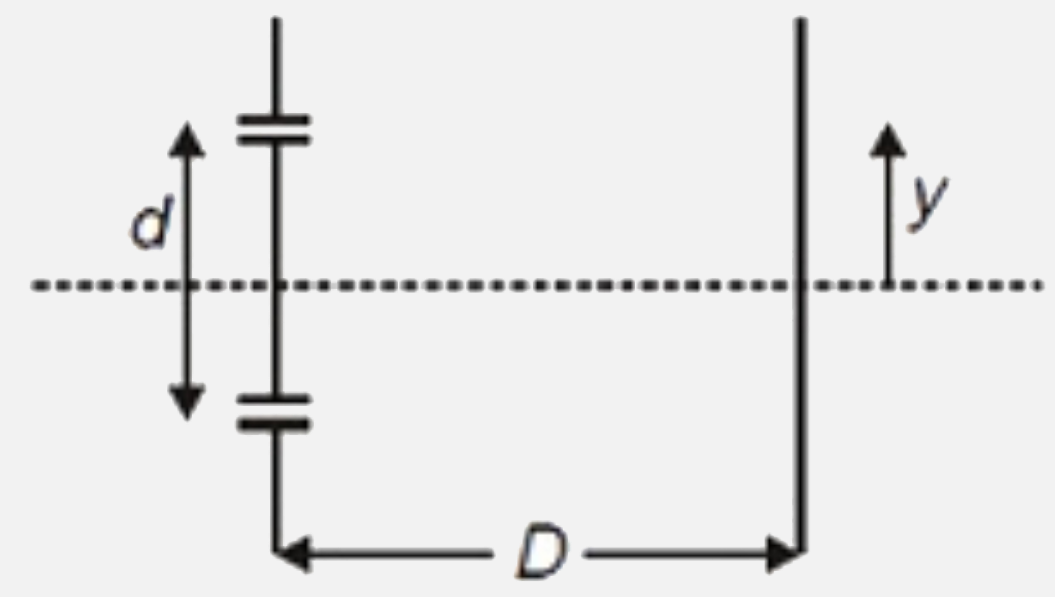Lights of wavelengths λ1=4500Å,λ2=6000Å are sent through a double slit arrangement simultaneously. Then
no interference pattern will be formed
the third bright fringe of λ1 will coincide with fourth bright fringe of λ2
the third bright fringe of λ2 will coincide with fourth bright fringe of λ1
the fringes of wavelength λ1 will be wider than fringes of wavelength λ2
The correct Answer is:C
Let pth bright fringe corresponding to λ1 coincides with qth bright fringe of λ2
x=pλ1=qλ2
pq=λ2λ1=60004500=43
4th bright fringe of λ1 coincides with 3rd bright fringe of λ2
Topper's Solved these Questions
Similar Questions
Two sources of light of wavelengths 2500 Å and 3500 Å are used in Young’s double slit expt. simultaneously. Which orders of fringes of two wavelength patterns coincide?
View SolutionIn YDSE a parallel beam of incident light consists of two wavelengths λ1=4000Åandλ2=5600Å. The minimum distance y on the screen, measured from the central axis, where the bright fringe due to two wavelengths coincide is nλ1Dd. Find n.

View Solution
Knowledge Check
Two wavelengths of light λ1 and λ2 are sent through Young's double slit experiment simultaneously. If the third order bright fringe of λ1 coincides with fifth order dark fringe of λ2 , then
A3λ1=5λ2B2λ1=3λ2C3λ1=2λ2D5λ1=3λ2Two wavelengths of light λ1 and λ2 and sent through Young's double-slit apparatus simultaneously. If the third-order bright fringe coincides with the fourth-order bright fringe, then
Aλ1λ2=43Bλ1λ2=34Cλ1λ2=54Dλ1λ2=45Two wavelength of light λ1 and λ2 are sent through Young's double-slit apparatus simultaneously. What must be true about λ1 and λ2 if the third-order bright fringe of λ1 coincides with fifth-order dark fringe of λ2
A3λ1=2λ2B2λ1=3λ2C3λ1=5λ2D5λ1=3λ2
Bichromatic light of wavelengths λ1=5000Åandλ2=7000Å are used in YDSE. Then,
View SolutionTwo sources of light of wavelength 4500 Å annd 6000 Å are used simultaneously in Young's double slit experiment. At which order of the two wavelength pattern,s the fringes coincide?
View SolutionA source emitting light of wavelengths λ1andλ2 is used in Young's double-slit experiment. If fourth bright of λ1 coincides with sixth bright of λ2, then
View SolutionLight of wavelength λ=5890Å fall on a double-slit arrangement having separation d=0.2mm. A thin lens of focal length f=1m is placed near the slits. The linear separation of fringes on a screen placed in the focal plane of the lens is
View SolutionIn a Young's double-slit experiment, if the incident light consists of two wavelengths λ1 and λ2, the slit separation is d, and the distance between the slit and the screen is D, the maxima due to each wavelength will coincide at a distance from the central maxima, given by
View Solution
